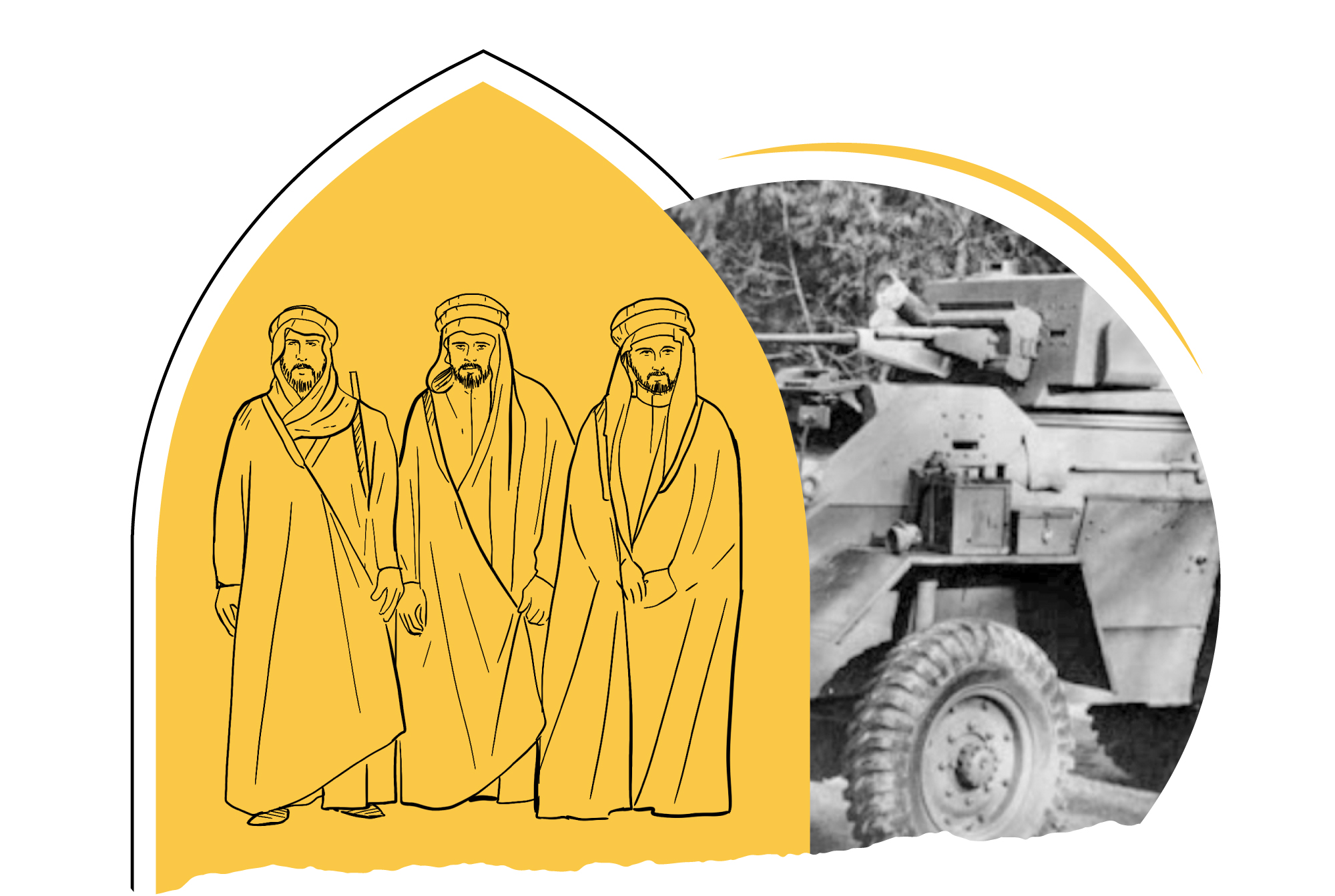
Thawrat al-Ghiman (1925)
Launched from Sheikh Khazal's "Palace" and Almost Ended the Persian Presence
It never occurred to the Iranian government that there would be strong and expected reactions from Ahvazi Arabs. Iran led the Prince of Ahvaz, through a malicious plot with its godmother, Great Britain, which secretly planned to occupy the Persians of Ahvaz, first to serve its colonial interests and then to prevent the Russians from reaching the Arabian Gulf and strengthen Iran’s influence in the Arab region, so that the Arabs would not be the only ones to take over the region’s oil sources and control over the key trade routes across the Arabian Gulf.
Ahvaz resistance began only three months after the occupation of Ahvaz, which was on 20 April 1925, when Sheikh Khazal’s soldiers and his private guards stood up against the Persianization policy and launched a revolution known as “Thawrat al-Ghilman” (Boys’ Revolution) on 22 July, under the leadership of the two boys (Shalash and Sultan). It was their response to the captivity of their Arab Sheikh and Emirate. The British report refers to that revolution stating that: “The Arab uprising broke out in Muhammarah at about seven thirty in the evening of the twenty fourth of July 1925. It was serious uprising of Arab tribesmen in Muhammarah, where about 400 armed Arabs, most of whom were boy servants of the sheikh of Muhammarah city, the Persian garrison, occupied the city by midnight”. In that revolt, members of the Iranian army fled to Kuwait and rebels took control of Muhammarah for several days. However, the British, according to what was stated in their report:
“Having lost contact with the British Vice-Consul, Sir A.T., the General Manager of the Anglo-Persian Oil Company, Wilson, took over and radioed the Chief Naval Officer in the Persian Gulf to urgently dispatch a gunboat and another to Basra, along with Humber Mk 3 Armoured Car, which arrived Basra at 01.00 am. On the morning of 25 July, it stood at the outer anchorage of Karun River.
British intervention saved the Persians before Sheikh Khazal's ghilman’s movement finished them off.

They sent armored cars and soldiers in support and backup operations from Basra. However, the first were returned before they reached the border and the last one did not land because the situation improved before their arrival. With the help of reinforcements from Ahvaz, the Persian forces reoccupied it on the morning of the 25th of August and pushed the Arabs towards Al-Faili. It was reported that the Arabs lost about 130 persons and Persian forces reoccupied the city on the morning of the 25th. The city was completely plundered and two employees of the Anglo-Persian Oil Company were wounded, where one of them, a British Indian citizen, later passed away.”
Then the Iranian army’s artillery bombarded them mercilessly after destroying the Persian garrison in the city. Following the failure of this Ahvazi resistance and its uprising against the occupation, severe terror descended on Ahvaz, where, of course, the qualitative difference between resistance and terrorism lies in the nature of violence: violence of those who defend their homeland compared to violence of those who defend the barbaric and hideous invasion and the crimes committed by the occupier against people. Persian authorities eliminated this revolution with extreme cruelty and severity, tried a large number thereof them and executed dozens without trial.
In the same year, Ahvazi revolutionaries gathered on the Shalha island in Shatt al-Arab, with the aim of attacking and restoring Ahvaz. However, at the request of the Iranian military governor in Ahvaz, the British forces attacked this gathering and destroyed it, coincidently with the outbreak of the epidemic in Arabistan. It was an unexpected step and was not linked to the plans of the joint revolution by the tribes of Kaab, Bani Tarf and the Minaw region. In conjunction with the outbreak of the epidemic in Muhammarah, the aforementioned tribes captured, first, Abd al-Hasan Sheikh al-Mashaykh, the candidate of the Persian government in al-Falahiyeh. The Arabs who had been expelled from Muhammarah on the 25th took up position at Faili, yet they were attacked by land and sea forces, and on the 29th Persian forces drove them towards Iraqi frontier, killing about 100 of them.
Thus, injustices from the foreign colonizer and from the spiteful aggressor Persian neighbor gathered against Ahvazis and it was the end of an Arab emirate that was expected to flourish and participate in Arab development.


- Farah Saber, Reza Shah Pahlavi: Political Developments in Iran 1918-1939 (Sulaymaniyah: Kurdistan Center Publications, 2013).
- Samia Al-Jabri, Ahvaz Arabistan during the Pahlavi Monarchy (Beirut: Jadawl for Publishing, Translation and Distribution, 2019).
- Ali Al-Helou, Ahvaz Revolutions and Organizations 1914-1966 (Najaf: Al-Ghari Modern Press, 1970).
- Ali Al-Helou, Ahvaz in Its Historical Roles (Baghdad: Dar Al-Basr, 1967).

